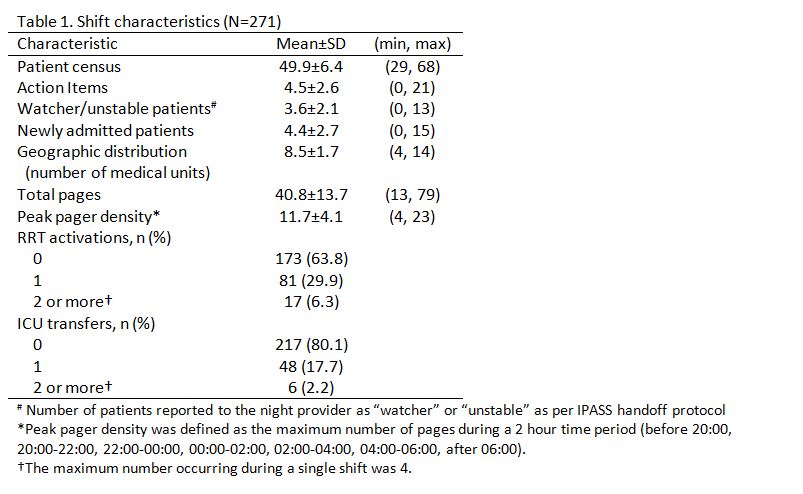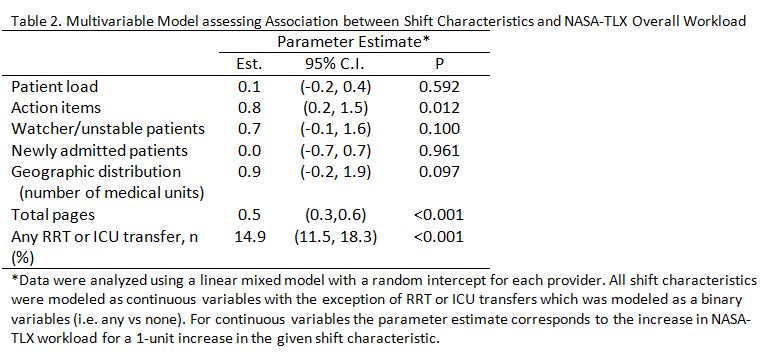Background: While many Hospital Medicine groups employ overnight providers to exclusively care for previously admitted patients (cross-coverage), little data exists regarding factors contributing to the perceived workload of this role. The NASA-Task Load Index (NASA-TLX) is a validated questionnaire used to quantify perceived workload.
Methods: Overnight providers completed the NASA-TLX at the end of each night shift. Numerous night shift characteristics were collected including patient census, assigned action items, watcher/unstable patients, newly admitted patients, geographic distribution, total pages, peak pager density, rapid response team (RRT) activation, and ICU transfer. Multivariable analysis was performed to determine which shift characteristics correlated with higher raw mean NASA-TLX scores.
Results: From 11/19/17 through 4/12/18 (representing 145 nights and 290 night shifts), 14 respondents completed 271 surveys (93.4% response rate). Mean number of patients managed by each of the two night providers was 49.9±6.4, distributed over a mean of 8.5±1.7 medical units (Table 1). Providers were responsible for a mean of 4.5±2.6 action items and 3.6±2.1 watcher/unstable patients. Night providers received a mean of 40.8±13.7 total pages, with peak pager density being 11.7±4.1 pages over a two hour period. One RRT activation occurred on 81 night shifts (29.9%) and two or more RRTs were activated on 17 night shifts (6.3%).
Mean NASA-TLX score was 35.1±19 with highest mean subscale scores being Effort (45.2±27.1), Mental Demand (42.3±26.3), and Temporal demand (37.3±26.5). In multivariate modeling, total pages, action items and any RRT or ICU transfer were associated with statistically significant increase in the mean NASA-TLX score, with estimated effect size of 0.5, 0.8, and 14.9 respectively per 1-unit increase in each shift characteristic (Table 2). Weighting this effect size by the mean frequency of each night shift characteristic, the greatest cumulative contributor to perceived workload was total number of pages, followed by presence of any RRT activation/ICU transfer, with estimated effect size of 20.4 and 14.9 respectively.
Conclusions: While many factors may contribute to workload, total number of pages was the greatest single contributor to perceived workload among night providers cross-covering Hospital Medicine patients. This finding lends some evidence base to quality improvement initiatives designed to improve pager communication as a means of improving provider satisfaction and reduce perceived workload.


